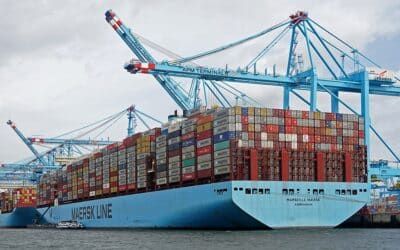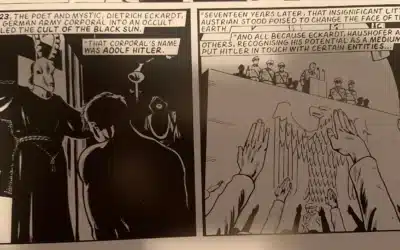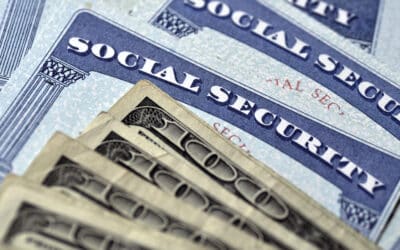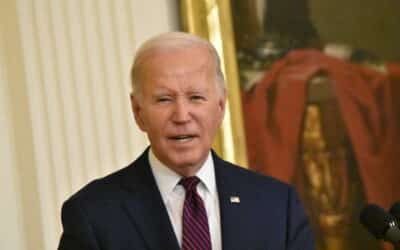The North Solomons or Bougainville was given its modern name in 1768 when a French explorer named the already inhabited mountainous tropical island paradise after himself. It was not until 1899 in the last days of the classical Imperial European colony grab, that Germany declared the island for itself. The island of Bougainville along with its close Western neighbour, Papua New Guinea which was then also a German colony. It was during World War One that that Papua New Guinea and Bougainville would become an Australian colonial possession. In World War Two the island and region became a focus of much of the fighting between the Japanese Empire and the Allies, many locals and foreign combatants died in bitter battles across its jungles and beaches. After World War Two, Bougainville along with New Guinea remained as possessions of Australia and would continue to remain under the Australian sphere of influence even after they reached a degree of autonomy.
1975 ‘Independence’ and one huge mine

The lowering of the Australian flag in a symbolic ceremony marking the end of Australian colonial rule of New Guinea and Bougainville.
It was not until 1975 that the Australian government relinquished the colony of New Guinea to a home rule status. The people of Bougainville attempted their own bid for independence from New Guinea in September of 1975 but were denied. Regardless the island’s inhabitants declared themselves as an independent nation of the Republic of North Solomons. Despite a distinctive ethnic and cultural difference between the people of Papua New Guinea (PNG) and those of Bougainville, no international bodies would recognise their claim and so legal independence would remain elusive. The government of PNG would still be able to retain control of the North Solomons and its people. The Australian government remained adamant in its determination that the Island should remain a province of the new nation state of Papua New Guinea, a former colonies colony. Much like Australia’s own history.
In 1969 a large amount of copper was discovered on the island of Bougainville, this led to the building of one of the biggest mines in the world. The site would become known as The Bougainville Copper Limited mine or the Panguna mine. The then Australian colonial government and its private partner Conzinc Rio Tinto began to establish the site by cutting open huge chunks of the earth, ripping the precious ore from it as the waste and refuse bled into the water supplies and ecosystems surrounding the mine. From the very beginning, many of the natives did not want the mine. Protests were strong and the Australian colonial government used riot police and heavy armed tactics to ensure that the mine was built despite many of the locals desiring otherwise. At one stage the Australian government considered deploying the military to quell the protests. The Bougainville Copper Agreement was a swift law passed that did not recognise any of the concerns or complaints made by the locals, instead the law served the best interests of Australia and Rio Tinto. It was classic colonial imperialism.
The mine began to encroach on private lands which were taken over regardless of the owners wishes. The land owners who did not have their property taken had to suffer the pollution and frequent intrusions by foreigners who had been brought in to work the mines. Locals were forcibly removed from their homes and land and many were placed on others’ properties. With no consideration or compensation, the relocation was done with an absolute imperial right which simply had to be suffered by the subjects of Bougainville. The locals already living on subsistent farms with their traditional lifestyles found themselves having to adapt to ever changing circumstances imposed upon them so that foreigners could exploit one of the biggest copper reserves in the world and in doing so destroy local livelihoods and much of the landscape.
Bougainville Copper was a mostly Australian owned enterprise, many Australians worked the mine and much of the profits from the mine flowed back into Australia. Rio Tinto the majority owner of the mine at first operated the mine under the auspices of the Australian Colonial Government where taxation and wider Australian business interests were satisfied. It was then in 1975 with PNG independence that the mining company worked with the new government. Regardless, the people of Bougainville saw little benefit from the mine and only suffered the negative impacts while foreign political masters enjoyed the benefits from their suffering. After independence from Australia the mine would go on to provide nearly half of PNG’s export revenue and while the PNG national government became a shareholder in the company, the local people of Bougainville saw very little benefit of any kind.
https://www.youtube.com/watch?v=yj9CZ615kz0
Here is a Bougainville Copper Limited induction video for the Australians looking to move to the Island and work in the mines. [Embedding disabled.]
Many of the natives of Bougainville that laboured for long hours and in a second class working status of the mines did so under what many have claimed to be ‘slave’ like conditions. Whether it was under Australian colonial rule or the government of PNG the conditions remained harsh and brutal for the locals. The Rio Tinto owned mine paid well for executives and non-natives but for those who shouldered the most arduous work and suffered the dangers had little to show for it. As Bougainville was then, and still is to this day, a developing nation the people are often exploited and viewed as inferior by their Australian, PNG and in the past Japanese and European masters.
There was a widening gap between the natives of Bougainville, their PNG masters and the other migrant workers brought in mostly from Australia that lived in privileged conditions compared to the marginalised locals. The dissatisfaction and grievances of the local workers began to intensify. From within the mine itself local workers were segregated from their white colleagues and suffered all the treatment expected of colonial masters in regards to those they viewed as being racially inferior. Having being denied political autonomy and then subjected to the humiliation of a new form of colonialism the people of Bougainville began to complain and protest. With the massive influx of non-natives to the Island along with the widening environmental impact and the removal of land from the people, all converged to further ferment a desperate desire for autonomy.
The Australian government provided support for the PNG government in both economic packages and defence training-supply. None of the aid went to Bougainville and while the governments of both PNG and Australia enjoyed their cut from the revenues of the mines they had little interest other than in the suppression and marginalisation of any local Bougainville instincts for self-rule and secession. Stability for Australia, Rio Tinto’s and PNG’s sake was paramount in priority. Despite impressive profits and returns being made by the mining company and those associated with it, the compensation that was paid to affected locals was so minimal that many of the relocated people starved and could not rebuild their livelihoods.
Professor Ciaran O’Faircheallaigh of Griffith University, in his report on the very initial operations of the mines and its ongoing impact to the locals and their environment, wrote,
“Mining companies were allowed to simply dump the waste into the rivers, which is what happened. There was no tailings dam in the way there would be in Australia to confine these. About 50 million tonnes of waste a year was simply dumped into the rivers, which became biologically dead within a couple of years. They broke their banks and the tailings and the waste from the mine started to spread out onto other people’s land.”
1988 War
After years of grievances and injustices for the people of Bougainville tensions soon led to open violence. The locals after years of being ignored and disregarded, suffering indignity and being denied employment opportunities soon resorted to violence as their only outlet. The Bougainville Resistance Army (BRA) emerged and began to fight the PNG Police and Military on the Island. At first the conflict was limited to the land around the mine but soon spread across the island. Non-natives who worked for the mine left and the mine itself was shut down due to the spreading violence. The PNG military responded by burning nearby villages and civilians were indiscriminately killed by both sides.
Soon after the Australian government increased its arms supply to the PNG government with a delivery of surplus UH-1 helicopters, patrol boats, ammunition, small arms and funding. While the PNG military and police received training by the Australian military and federal police, readying PNG for an insurgency. The island of Bougainville fell under a PNG blockade that was both indirectly and sometimes directly supported by the Australian government. Though the conflict had dwindled down exchanges did occur when PNG elements neared the island. The recently acquired UH-1 helicopters from Australia had been quickly converted into gunships and used to enforce the PNG blockade of the island. The PNG Defence Force (PNG DF) and Police enjoyed the supply from Australia’s surplus stock left over from its deployment in Vietnam, as the Australian Defence Force was switching over to more modern small arms and uniforms so its recently retired kit was eagerly offloaded to the northern ally in its own counter insurgency operations.
Operation ‘Footloose’ was the April 1989 operation conducted by the PNG DF in hopes of breaking the BRA and its supporters. The PNG forces fired mortars, grenade launchers and heavy machine guns into the outlying villages with indiscriminate fire, killing and wounding many civilians. The recently acquired helicopters from Australia, now in their converted gunship form, attacked any community settlement from the air. The BRA was seldom if at all concentrated in the villages, instead the attacks were focused almost completely on the innocent and unarmed, many of them children. The BRA responded to the PNG DF attacks with its own offensive, which in turn caused the BML and many of the foreign employees and their families to completely abandon the Island. In 1989 the PNG military and government officials left the island and the BRA declared independence in 1990.
By 1990, the BRA had most of the control over the Island. This led to one of the strictest embargoes in recent history, restricting the locals’ abilities to access medicine, food and general supplies. The Australian Defence Force in a passive way helped to maintain what would become a six year long blockade which included a ban on media from entering the Island and NGO aid workers from providing any assistance to those in need. Some managed to defy the blockade at great risk.
Allegations emerged during this period of the PNG DF shooting at and sinking Red Cross boats as they carried sick civilians to get treatment in the nearby Solomon Islands. The Red Cross and private parties did their best to defy the blockade by running small boats filled with clothing, food and medical aid, the ever-present PNG patrol boats only recently supplied to them by Australia hunted down the unarmed blockade runners. Regardless of the best efforts of the Red Cross and other heroic private parties the situation on Bougainville remained dire. The BRA itself operated several small speedboats that ran the gauntlet between PNG patrol boats as they dashed from Bougainville to the Solomons, resupplying their own forces and what civilians that they could.
In the early 1990s tribal violence from the island began to intensify as groups and village militias opposed to the BRA began to fight the centralised Bougainville authority. The PNG DF supplied and supported some of the anti-BRA factions, ensuring the conflict widened. The internal conflict on the island began to increase the suffering felt by non-combatants in the form of murder, kidnap, rape and theft. Scores of local conflicts raged, the fury relating to land ownership. The relocated and those who had lost all their land took their anger out on those who had not, while the BRA and PNG supported some factions much of the fighting was very localised and lacked a wider scope. Such conflicts further confused the war and added to the widening crisis for those victims of the fighting. For many of the combatants during the tribal violence, Bougainville’s independence was the least of their concerns.
As Australia and its military deployed to the middle east to protect the Kuwaiti and Saudi kingdoms from former Anglo-American ally Saddam Hussein and his army of conscripts, some of its advisors remained locally to oversee the human rights violations being conducted so close to Australian shores. As a mighty coalition of the World’s ‘free’ nations fought to protect the richest monarchies from their neighbour, Australia continued to support and condone the blockade and systematic starvation and slaughter of one of the poorest islands on earth. Political applause and jingoism from the proud Australian people and its elites jeered as they shared victory in operation ‘Desert Storm’ their celebration wailed out over the hungry tears of thousands of innocent human beings on Bougainville who remained ignored and denied their own reprieve from oppression and war.
The United Nations soon called for an end of the PNG and Australian embargo on Bougainville in 1992. “You cannot keep a people under detention for four years and expect the world to turn a blind eye. What Papua New Guinea and Australia have been doing to Bougainville is no longer a secret. The word is out!” Mike Forsterthe head of the Bougainville delegation to the UN exclaimed in Geneva. The UN sub-commission voted unanimously for PNG and its Australian backer to end the blockade and allow the people of Bougainville free passage. Australia instead sent PNG a fifth UH-1 helicopter and the blockade and attacks continued.
During 1992-93 the PNG military began to increase its raids into the island and in some instances crossed into neighbouring Solomons in pursuit of BRA rebels. In 1994 the PNG military attempted to retake the Panguna mine by force, the operation failed and many soldiers were killed by the insurgents. By this period the villages surrounding the mines had been levelled and many civilians and rebels had been killed. Pressure from the Australian government and Rio Tinto had been further applied to the PNG government to send more troops to the Island to control matters. Australia had provided the arms, training and funding. Rio Tinto would offer the incentives while the PNG military would do the dying and killing.

BRA fighters overlook the coastline from a hilltop position. Though armed with small arms, many of which are machetes, axes, homemade shooters or civil hunting rifles they manage to defy the Australian armed and trained PNG DF.
The media had been banned by the PNG government from entering Bougainville while the Australian government did its part to downplay the nature of the violence being committed by their PNG allies against the people of Bougainville. During this period PNG DF personnel had been on a campaign of terror and rape, destroying farming stock while also harassing the local populace. It was done in plain sight of their Australian masters and with their complete awareness. The arms, funding and training continued to flow to PNG from Australia, widespread civilian murder and rape continued the atrocities were all but ignored by the media and International community despite the many victims.
The Australian government at that time was concerned that after much investment in PNG, that the conflict would fracture the government but most of all destroy the Rio Tinto mine from continuing its operations. The Australian government had infused over a billion dollars in support to the PNG government and could slowly see its investment deteriorate as the determined resistance on the ground in Bougainville continued. As the blockade continued and conditions worsened the PNG government continued to supply dissatisfied elements from within the Island so that they may attack the BRA and destabilise the unity of the locals. Numerous internal battles continued as the outsider elements stoked the fires and armed the anti-BRA elements. Despite this a stalemate continued on and around the Island as the PNG forces were unable to usurp control from the BRA.
Sandline and beyond
In 1996 the World’s attentions swiftly turned to the conflict and the plight of the people of Bougainville in what would come to be known as the ‘Sandline Affair’. Then PNG Prime Minister Julius Chan had been instrumental in his attempts to seek a diplomatic resolution regarding Bougainville since he came to power in 1994 in spite of the blockades and continued sporadic military incursions by his own government. After failure in a final bid to seek a peaceful solution with the Bougainville leadership, the BRA and its government sought complete autonomy, whereas PNG insisted the island remain a part of the small nation. The PNG government requested support and assistance from Australia and New Zealand in a final military operation to retake the island. However, by this time the Australia government had become less eager to continue on with the conflict and had for the most part lost interest since the change of political regime in Canberra from Paul Keating to that of John Howard.
Undeterred the PNG leadership sought the assistance of UK based mercenaries. The recently formed British mercenary organisation, Sandline International was brought in to provide assistance with planning and supply for the upcoming PNG DF offensive. At first the mercenaries only helped to plan a PNG DF operation, which failed dismally when the PNG soldiers retreated unceremoniously at first contact with the BRA forces. It was then decided that mercenaries would be used to bolster the PNG forces and retake the Island while also helping to reopen the Panguna mines.
In January of 1997, 44 Australian, South African and British mercenaries were contracted to support the new PNG offensive. These mercenaries would come at a cost of $36 million, which would be secretly paid to them outside of the PNG parliament’s knowledge. The mercenaries would operate as a special forces arm for the PNG DF. In February, Prime Minister Chan told the Australian foreign minister Alexander Downer that the PNG government would be bringing in mercenaries to help ‘train’ the PNG DF. The Australian government condemned the move and suddenly the information was leaked to the Australian press where the response was loud and condemning of the PNG government’s move. Despite the PNG military’s many atrocities leading up to this event, the idea of mercenaries operating in the region upset the sensitive Australian public far more than the years of blockade and war. Not the dead and starving people of Bougainville but the presence of 44 mercenaries.
The scandal and international furore soon materialised into a near military coup when members of the PNG DF protested and opposed Prime Minister Chan publicly. The scandal rocked Port Moresby, the capital of PNG and Australia. The Australian government and public now suddenly infused themselves as the calming influence for the region. Having supported and enabled the PNG military campaign in Bougainville for many years, Australia took it upon itself to intercept the mercenaries and confiscate their aircraft, including Mi 24 gunships. The Sandline contract was cancelled and a standoff between the Chan government and the military ensued leading inevitably to the Prime Minister’s resignation. In April 1998, thanks in no small part to the Sandline controversy, a cease fire was signed between the combatants of Bougainville and Papua New Guinea.
During 2001 a long lasting peace agreement was reached, the conditions being that North Solomons would become an autonomous zone though remaining a province of PNG. A referendum would then be conducted around 2019-2020. The date has continued to change and while it is set for that time now, it could be pushed back further. Whether Bougainville gains complete independence is unknown but given the present upsurge in popular independence and ‘exit’ movements across the world, the people of Bougainville can find solace in realising that their time may be near.
In 2001 a class action against BCL was commenced in the United States. The many victims and aggrieved from the mine attempted to find some justice in what they considered to be a neutral court. The Australian Department of Foreign Affairs and Trade communicated to the US government, in 2001 that such a class action was dangerous because it, “would be an unsettling and destabilising event in circumstances where the need for stability and certainty on the island is paramount”.
After intense lobbying from the Australian, British and United States governments the court case was shut down in 2013 on ‘Jurisdictional grounds’. But not before millions of dollars were spent and over a decade of effort and hard work was invested in seeking some form of justice for the people of the island. The US court and legal professionals were paid regardless of the outcome and the poor people of Bougainville returned home with no justice or closure. It was argued by the Australian, US and British governments that the outcome of the court case may harm the Bougainville peace process. The fact that a positive outcome for the people of Bougainville could have caused financial damages to the British-Australian mining business, Rio Tinto and also could have served to expose those governments and the mining giant’s complicity during the war which was never officially acknowledged.
Whatever the outcome of the referendum shall be, Bougainville faces a future of uncertainty. The impoverished people stand to become exploited again in the future as their Island possesses impressive mining resources. History has taught them that Australia, New Zealand, the UK, the USA and PNG clearly do not have their best interests at heart and will stand by as they starve and die. It has also shown them that regardless of the ideals of International law and the rulings of the United Nations, that poor islands like theirs are unimportant to the World’s political elites, except when it comes to the pillaging of their resources. The wounds will not heal quickly and the scarred earth and poisoned water supplies will remain that way for some time. What the people of Bougainville did learn is that despite their poverty and lack of resources they could successfully defeat a larger national military and outlast its Government in a terrible war of attrition where it has been calculated that approximately 20,000 people died. Considering a population of only about 175,000 that is a huge toll for a small nation.
As the Australian government and its population continue to enjoy its many military adventures abroad, notably inside the distant lands of the Middle East and Central Asia, so near to its shore line a people suffer both shame, injustice but most of all uncertainty. Though Australia was once a rampant supporter of the PNGs conduct in Bougainville, it has since lost interest and the stomach to sustain the bloodshed. This betrayal of the PNG regimes and objectives is a welcome reprieve for the people of Bougainville, though it shows a sinister self-serving pragmatism and the untrustworthy nature always exhibited by Australian governments when it comes to regional matters. While support and rhetoric is offered to powerful and mighty nations when the blowback of their foreign policy strikes at them with malicious savagery, a small island of people can expect to receive nothing more than the occasional consideration. What the future holds for Bougainville, we shall some day see and all we can do is hope that justice, peace and liberty finds a people who are in desperate need of it.
Kym Robinson, Dec 2016

What remains of the abandoned Panguna mine. Its fate is ever linked to the people of Bougainville.
Sources and Further information
Websites-Articles
https://www.greenleft.org.au/content/australias-military-role-bougainville
http://statecrime.org/state-crime-research/remembering-another-pngdf-call-out/
http://statecrime.org/state-crime-research/why-bougainville-landowners-oppose-rio-tintos-return/
http://arena.org.au/bougainville-australias-secret-war-by-kristian-lasslett/
https://www.greenleft.org.au/content/un-committee-calls-end-bougainville-blockade
http://crasstalk.com/2011/06/war-for-profit-in-bougainville/
http://www.abc.net.au/radionational/programs/rearvision/bougainville-at-a-crossroads/6514544
https://newmatilda.com/2013/04/23/ausaid-fuels-bougainville-mining-tensions/
https://www.eurekastreet.com.au/article.aspx?aeid=36897#.WE3e2H3raUk
http://statecrime.org/state-crime-research/why-bougainville-landowners-oppose-rio-tintos-return/
http://www.abc.net.au/news/2015-09-16/timeline-of-papua-new-guinea-road-to-independence/6748374
http://www.statecrime.org/testimonyproject/
Documentaries and Films
SBS Dateline Blood and Treasure.
Mr Pip, 2012, Olympus Pictures
Books
Peace on Bougainville, 2001, Rebecca Adams
State Crimes on the Margin of Empire, 2014, Kristian Lasslett
Military and Democracy in the Asia and the Pacific, 2004, May, Ronald James; Selochan, Viberto

